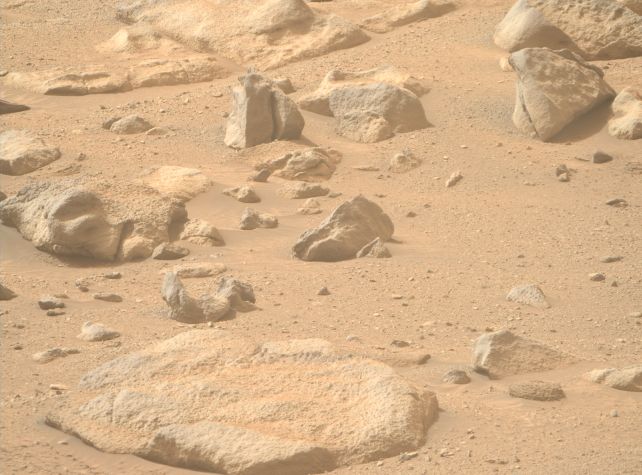Eerie Discovery on Mars Looks Exactly Like a Human Face : ScienceAlert
Mars pareidolia strikes again. An image captured by the Perseverance rover in the course of its duties is one of the grisliest yet: it looks, for all the world, like a desiccated, decaying human head, severed from any body, just withering away under the harsh light of the Sun.
It is not a human head, you may be relieved (or dismayed) to know. It is – like most things on Mars that isn’t a bit of ice, cloud, dust, or a nifty hole – a rock, one that so happens to look like another thing.
This particular rock was photographed on 27 September 2024, and monstrous head aside, it looks like a chunk of sedimentary sandstone not unlike other rocks around it. Which isn’t unusual for Mars, especially where water is once thought to have flowed.

The thing that makes it unusual is its shape: the way it is weathered, and its orientation to the camera, make it look like a head, laying on its side, showing similarities to a brow ridge, nose, mouth, and chin.
Pareidolia, or the identification of meaningful shapes and images in random objects and arrangements, is surprisingly common among pictures of Mars. So far, we’ve found rocks that look like a bear’s face, fungus, a carved image of a warrior, a teeny tiny Bigfoot, a spoon, a femur, and even bugs.
It’s thought to happen when your eyes see an arrangement of shadows or objects or shapes, and some parts of your brain that process visual information jump to conclusions before the rest of your gray matter catches up, and it absolutely happens here on Earth too. There’s even a special nub of tissue devoted to the rapid identification of faces, contained within the fusiform gyrus deep within the brain.

Take a look through Onformative’s Google Faces project, to identify face-like shapes in Google Earth images. The Badlands Guardian is a particularly famous example. Other examples include what look like human faces spotted on single grains of sand.
It’s a pretty cool coincidence that a rock on Mars can be eroded in the shapes and proportions of a humanoid head, but that’s all it is. To date, there remains no evidence that complex life ever emerged on, or visited, the red planet.
Humanity is hoping to change that, with future crewed missions to Mars being planned. We might just be the aliens that leave mysterious objects behind, to baffle other alien explorers, far into the future.
Source link
